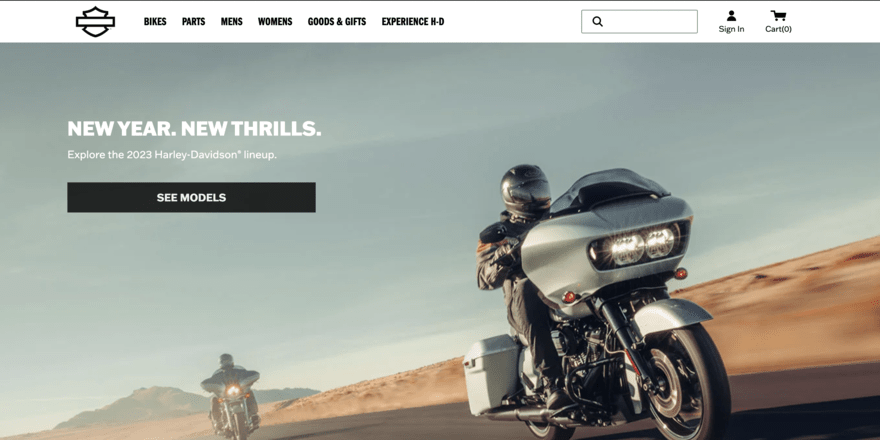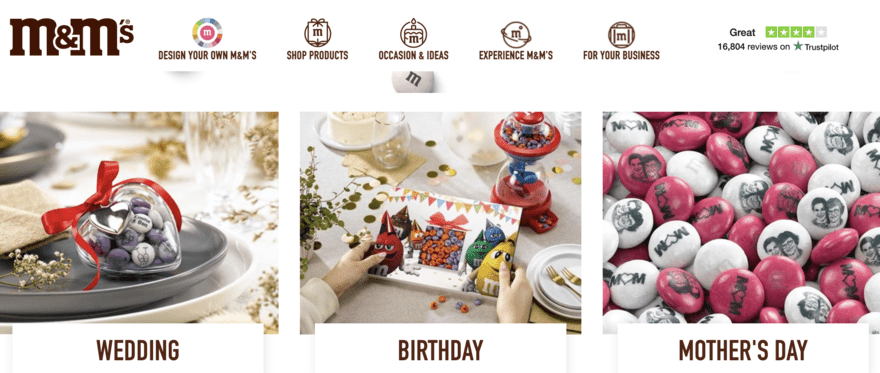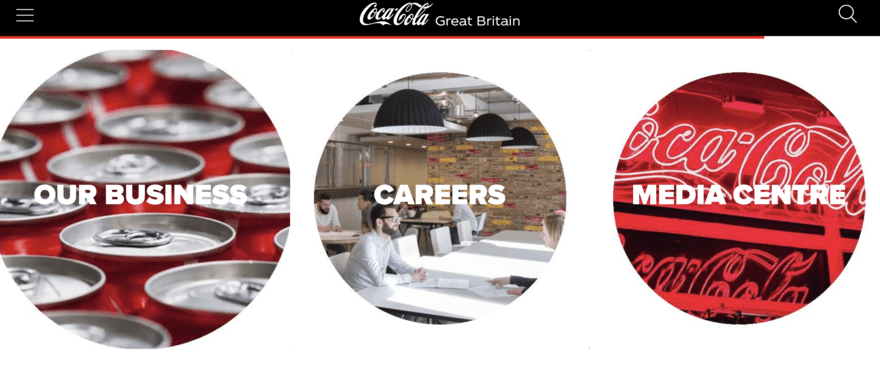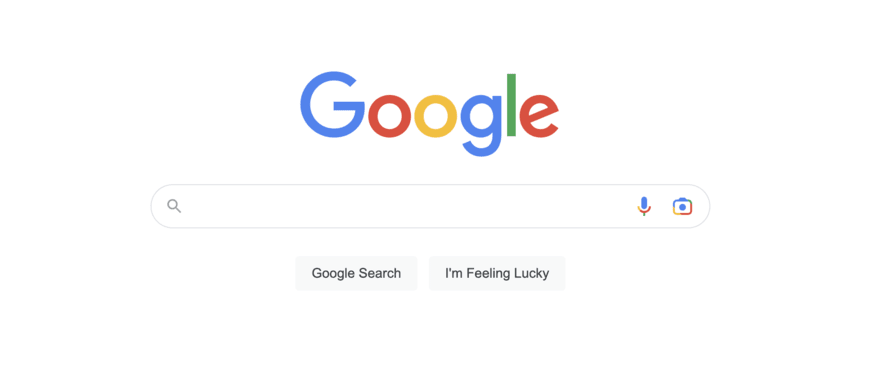The 12 Brand Archetypes: Guide and Examples
If you click to purchase a product or service based on our independent recommendations and impartial reviews, we may receive a commission. Learn more
Building an online brand is hard. It takes a lot of work to create a brand that users resonate and connect with, but you’re well on your way to online success if you can manage it.
Finding a way to connect with your audience in a meaningful way allows you to build customer loyalty and trust, and it helps to position you as an authentic brand.
Brand archetypes are based on human psychology. They’re a key framework that you can use for all of your branding and communications to help form deeper connections with your audience.
In this article, we’ll explore the 12 brand archetypes and how you can use them successfully.
What is a Brand Archetype?
A brand archetype represents your brand as a persona, based on 12 key human emotions or values.
Brand archetypes date back to the 1940s when Swiss psychologist Carl Jung developed a set of 12 common personality archetypes.
The 12 archetypes were said to represent every single human being and every human is said to be able to relate to one or more of the archetypes.
To put it simply, a brand archetype is the personification of your brand values, mission, and story. Everyone can relate to archetypes, no matter what your context or culture, and discovering your brand archetype can elevate every element of your brand strategy.
The 12 Brand Archetypes + Examples
So now we’ve answered the question “what is a brand archetype?”, let’s take a look at the 12 archetypes and some well-known brands that fit with each one.
The Outlaw
The outlaw is the rebel of the archetypes, seeking to disrupt their industry and challenge the status quo.
Outlaw archetypes don’t follow the rules and are seen as a figure of power and authority, disrupting norms. Fictional characters such as Zorro and Robin Hood are two of the most famous outlaws.
When it comes to brand archetypes, Harley Davidson perfectly personifies the outlaw archetype. This is a brand who are happy to take risks and appeals to the inner outlaw within its audience. Outlaw brands often create a cult-like following, just like Harley Davidson, and have immeasurable brand loyalty.

The Magician
The magician brand archetype centers around making impossible dreams come true, dazzling their audience with new and exciting experiences.
Magician brands will take their audience on a journey of discovery – branding and communication will often be innovative, inspiring, and charismatic.
Brands that fall under the magician archetype will usually start with a unique and inspiring vision and use this to guide all of their work.
The most famous example of the magician brand archetype is Disney. The brand is synonymous with creating magical experiences and for many years the company’s tagline was literally “where dreams come true”.

The Hero
The hero brand archetype is one we’re all familiar with. The hero has a strong sense of right and wrong and seeks to end injustice and make the world a better place.
Hero brands are constantly striving for success and encouraging other people to do the same. They promote hard work as the answer.
Many hero brands will be proud of their successes and shout about them to their audience. They’ll also position themselves as set apart from their competitors thanks to their hard work and determination.
A great example of a hero brand is Nike. The sports brand focuses on encouraging its audience to constantly strive for success, using motivational messaging and powerful marketing campaigns. The famous tagline “just do it” is the perfect example of hero messaging as is the brand’s use of some of the greatest athletes of our generation within its marketing campaigns.

The Lover
The lover archetype is all about relationships, and brands that fall under this archetype are often sensual, emphatic, and looking to build an even deeper connection with their audience.
Most commonly used for brands within the fashion, cosmetics, and jewelry industries, the lover archetype focuses on human relationships and spiritual connections.
The most obvious lover brand is Victoria’s Secret. As a lingerie brand, it makes total sense for it to utilize the lover archetype, which it does within every touch point – from its products to the pink and red color palette and darkly lit in-store experiences.

The Jester
The jester archetype wants to bring joy to people, making them laugh and creating a sense of fun.
Jester brands are engaging, playful, and don’t take themselves too seriously. Everybody likes to laugh and feel happy, so if you’re able to invoke that emotion in your customers you’re already onto a winner.
The jester archetype is most commonly used with confectionary and beer brands, and brands aimed at younger audiences. It’s also often the go-to for many male-targeted brands.
One of our favorite jester brands is M&M’s. The iconic confectionary brand has built up a major international presence thanks to its playful and light-hearted branding. The bright colors and iconic M&M characters all help to shape its jester archetype.

The Everyman
The everyman brand archetype focuses on the everyday person. They want to be relatable, liked by all, and but brands under this archetype try to avoid standing out too much.
The main aim of the everyman archetype is to connect with as many people as possible, and everyman brands will usually position themselves as safe and approachable.
Everyman brands can develop a strong sense of community – audiences feel like they belong and they’re generally inclusive spaces for all.
IKEA is the perfect everyman brand. The flat-pack furniture specialists have created a brand that’s relatable and appealing to “normal” people. Its no-nonsense, affordable, and basic approach to branding and marketing is the perfect definition of the everyman brand archetype.

The Ruler
The ruler archetype is one of the most dominant personas. They love rules, especially when they can set them, and have strong desires for power and control.
Ruler brands will position themselves as industry leaders with a wealth of expertise, strong leadership skills, and confidence in their abilities. They’re also often some of the most stable and trustworthy brands with a strong sense of reliability and customer trust.
Ruler brands use a refined and commanding tone and marketing style to sell their products, often within the luxury market, helping to create a sense of exclusivity and status.
One of the most iconic ruler brands is Rolex. The luxury watch brand positions itself as the dominant watch brand on the market and is perhaps the most reliable and trusted brand for a luxury watch. It’s also created a sense of exclusivity and status thanks to how hard it is to purchase one of the timepieces.

The Caregiver
Caregivers are driven by a desire to help others and are compassionate brands with a strong brand ethos and mission.
Caregiver brands will position themselves as a “motherly figure”, providing care and support to their audience. They’ll usually have a strong charity or community focus, too.
Many caregiver brands will align themselves with a cause, helping their customers to feel cared for and secure.
Caregiver brands can be both for-profit and not-for-profit organizations. For example, charities such as WWF and Unicef are both great examples of well-known caregiver brands whose focus is to give back and support other people. Meanwhile, shoe retailer Toms may be a for-profit company but it has positioned itself as a brand dedicated to caring for the planet and community, ultimately putting charity over profits.

The Creator
The creator archetype focuses on inspiration and imagination, giving people the tools they need to create their visions.
Creator brands are all about innovation and encouraging people to enjoy the creative process, giving audiences the tools and knowledge they need to, well, create.
Creator brands are non-conformists and will often launch products or services that have never been seen before or push the normal boundaries of design.
The products and services they offer all focus on empowering people to think creatively and express themselves.
When we think of creator brands, the most obvious is Apple. The tech giant has totally transformed the tech landscape with innovative products and encouraged its audience to use these products to do the same.

The Innocent
Brands with an innocent archetype are focused on being optimistic, engaging, and positive.
The main mission behind innocent brands is to spread joy. They rely on the simplicity of their brand, their honesty, and customer loyalty, as opposed to innovation and a steady stream of new launches.
The innocent brand’s messaging is usually optimistic and simple, focusing on its key service offering above all else.
A great innocent brand example is Coca-Cola. The fizzy drink company is always uplifting and optimistic, using bright colors and fun advertising campaigns. The brand’s iconic Holidays Are Coming annual Christmas campaign is a great example of an innocent archetype, focusing solely on spreading joy.

The Sage
The Sage is a seeker of knowledge and wisdom, and at the core of sage brands is the belief that knowledge is power.
Sage brands are usually thought leaders and, rather than try to change the world themselves, will offer products and services that empower their customers to do so instead.
Sage brands will aim to highlight the importance of lifelong learning, emphasizing the importance of education, truth, and knowledge.
Google has arguably become the world’s biggest sage brand. An online encyclopedia of knowledge and information, the search brand positions itself as being able to provide the answer to any question in seconds, opening up a whole new world of knowledge and information to users.

The Explorer
Explorer brands are not held back by constraints or typical expectations. Instead, they seek to break the mold and find adventure.
Those who fall under the explorer archetype are always looking for a new challenge and have a strong sense of independence and discovery.
Explorer brands will usually communicate with their audience in an exciting and fearless voice, looking to evoke emotions of excitement or even danger.
Explorer brands will often promote the unknown and are most commonly outdoors or activity brands.
The North Face is a great example of an explorer brand. The outdoor brand encourages users to face new challenges and explore the world with the help of its clothing and outdoor accessories. The brand’s marketing campaigns always focus on pushing boundaries and exploring new places.

Your Brand Archetype
To discover what your brand archetype is, you need to first make sure you understand your business, your aims, and most importantly, your audience.
You need to determine how potential customers perceive your brand and how your brand makes them feel, as well as think about how you want your audience to view your brand.
The best way to determine your brand archetype is to talk to your audience. Undertake audience analysis to understand how your brand makes people feel, how people perceive your brand, and how your existing brand influences purchasing decisions.
Once you’ve understood what your audience is looking for from your brand, it’s time to look inwards.
You should take a look at your brand as a whole and ask yourself some key questions:
- What are your brand values?
- What emotions do you want to prompt in your audience?
- How would you describe your brand?
The answers to these questions will help you to determine which brand archetype is the best fit for your brand!
Brand Archetypes: Summary
Brand archetypes are a great way of discovering the human characteristics that define your brand, allowing you to utilize these within your branding, marketing, and communications.
Discovering your brand archetype enables you to form deeper connections with your audience based on emotions, meaning you’ll attract customers to your brand thanks to shared values and characteristics.
To recap, the 12 brand archetypes are:
- The Outlaw
- The Magician
- The Hero
- The Lover
- The Jester
- The Everyman
- The Ruler
- The Caregiver
- The Creator
- The Innocent
- The Sage
- The Explorer
Make sure you let us know in the comments below which brand archetype your brand relates to most! If you enjoyed this article why not check out our guide to rebranding your business next?

Leave a comment